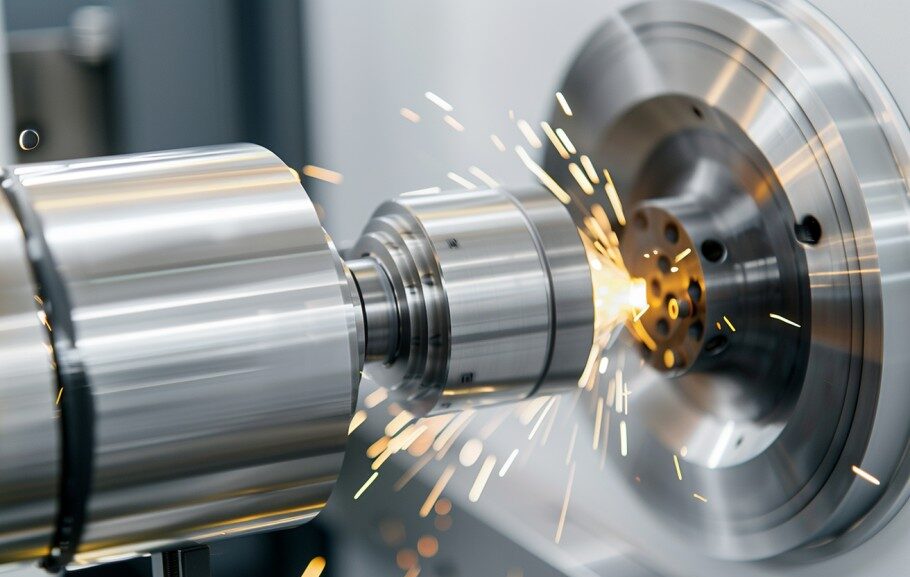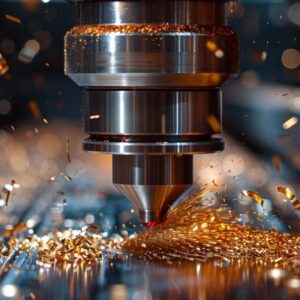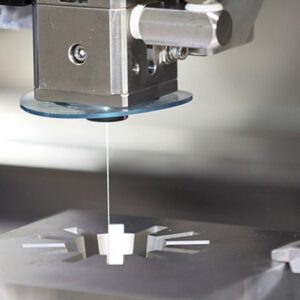CNC turning is a precise subtractive manufacturing method that shapes materials into unique parts and components. In CNC turning, a stationary cutting tool removes material as the workpiece rotates at high speeds for cylindrical complex shapes. The technique is a modern iteration of ancient lathe technology; computerized settings optimize speed, accuracy, and repeatability. Using G-code, machining elaborate patterns and fine details in metals, polymers, and other materials renders CNC turning essential for axially symmetrical rods, shafts, and bushings.
The CNC Turning Process
Setup and Calibration
The CNC turning machine must be set up with the workpiece connected to a chuck. Calibration entails programming the machine’s axis and RPMs. Operators enter dimensions and tolerances into the CNC system to coordinate tool paths with workpiece rotation for material removal.
Material Removal
The fixed cutting tool peels material from the turning workpiece to form the component. The cutting tool’s feed rate, depth of cut, and speed may be altered for finishes and dimensions while turning. The phase defines the part’s basic shape and needs regular monitoring for definite criteria.
Finishing and Inspection
CNC turning may need sanding or grinding to polish the surface after primary shaping. The process ends with an exhaustive inspection utilizing calipers and micrometers to verify the finished product satisfies all dimensions and tolerances. This stage checks CNC accuracy and product quality.
Key Components of a CNC Turning Machine
- Spindle
- Chuck
- Turret
- Tool Holder
- Tailstock
- Control Panel
- Bed
- Carriage
- Lead Screw
Advantages of CNC Turning
Precision and Accuracy
CNC turning produces exceptional precision and accuracy. Refined CNC technology allows turning to attain tolerances of +/- 0.0025 millimeters or tighter. Remember, it becomes appropriate for precise applications, including aerospace and medical equipment.
Speed and Efficiency
Another benefit of CNC turning is production speed and efficiency. CNC lathes run continuously without human adjustments while lowering cycle times and strengthening production. It makes them ideal for high-volume manufacturing runs that need quickness and uniformity.
Some other benefits:
- Consistency in production.
- Versatility in material compatibility.
- Minimal waste production.
- Scalability in manufacturing.
- Abridged labor costs.
- Heightened safety for operators.
- Integration with CAD/CAM software.
- Customization capabilities.
- Automated cooling systems.
Applications of CNC Turning
Automotive Industry
In the automotive sector, CNC turning helps manufacture numerous components, including axles, drive shafts, and transmission parts. The capability to yield durable and precise parts quickly matches the automobile industry’s demands for high quality and dependability.
Electronics and Aerospace
In electronics and aerospace, CNC turning creates multifaceted components like connectors, bushings, and fasteners. Such industries necessitate parts that fit with tight tolerances and implement under risky conditions, which renders CNC turning superlative.
Some other applications:
- Medical devices.
- Industrial machinery components.
- Energy sector components (e.g., oil and gas, wind turbines).
- Defense and military equipment.
- Marine applications.
- Tool and die manufacturing.
- Optical components.
- Recreational sporting goods (e.g., bicycle parts).
- Robotics components.
- Construction equipment.
- Custom fasteners and fittings.
Choosing Between CNC Turning and Milling
CNC turning or milling relies on product form and production volume. Turning suits cylindrical or axis-worked items. Milling is excellent for complicated shapes and features that need several axes. Turning’s quicker setup times and simpler tooling render it cheaper for massive quantities of round or tubular parts. Milling is better for items with intricate patterns or needing precise flatness and feature location since it can create elaborate and detailed forms on different surfaces.
Need more information about CNC milling or how it may help you? Contact us.




